Argentinien |
|
|
|
| Übersicht – Contents: | |
Argentinien |
|
|
|
| Übersicht – Contents: | |
| Flaggen – Flags: | |
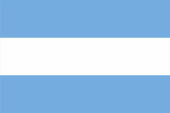 |
bis/to 1985 nur/only, |
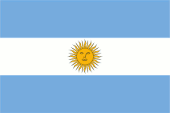 |
bis/to 1985 nur/only,   |
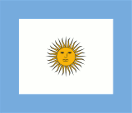 |
Gösch – jack, Seitenverhältnis – ratio = 6:7, Quelle/Source, nach by: Corel Draw 4, Flaggen und Wappen, Wikipedia (EN) |
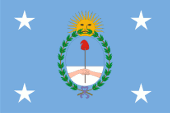 |
Flagge des Präsidenten – flag of the President, Seitenverhältnis – ratio = 2:3 (?), Quelle/Source, nach by: Corel Draw 4, Flaggen und Wappen, Flags of the World |
| historische Flaggen – historical Flags: | |
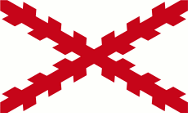 |
bis/to 1785, Flagge Vizekönigreich Peru und Marine- und Kriegsflagge – Flag of the Viceroyalty of Peru and naval and war flag Quelle/Source: Wikipedia (D) |
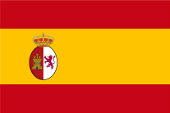 |
1785–1810, Flagge Spaniens und Flagge des Vizekönigreichs Peru – Flag of Spain and of Viceroyalty of Peru Quelle/Source: World Statesmen |
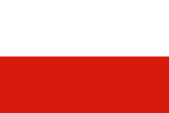 |
1810–1812, Nationalflagge – national flag, Seitenverhältnis – ratio = 2:3, Quelle/Source: World Statesmen |
Bedeutung/Ursprung der Flagge – Meaning/Origin of the Flag: |
|
| Die Flagge wurde am 27.02.1812 offiziell eingeführt. Sie ist ein Entwurf von General Manuel Belgrano und zeigt drei waagrerechte Streifen in Hellblau, Weiß und Hellblau, und seit dem 25. Februar 1818 zeigt die Staatsflagge die "Maisonne" in der Mitte des weißen Streifens. | The flag was officially introduced on the 27th of February, 1812. It was designed by General Manuel Belgrano and shows three horizontal stripes in pale blue, white and pale blue, and the state flag shows the "May Sun" in the middle of the white stripe since the 25th of Feb. 1818. |
| Die "Maisonne" ist ein Nationalsymbol, das daran erinnern soll, dass es am 25.05.1810 zu einer großen Demonstration auf dem Markt der Hauptstadt kam, auf der Forderungen an den Vizekönig gestellt wurden. Zunächst war der Himmel bedeckt, nach dem Verkünden der Forderungen öffenete sich die Wolkendecke und die Sonne begann zu scheinen. Nach anderen Quellen sei General Belgrano anlässlich der Schlacht von Paraná zu diesem Bild inspiriert worden, als er zum Himmel und in die Sonne schaute. In Wirklichkeit ist das Sonnensymbol viel älter. Es ist die Inkasonne, sie steht für Inti, den Sohn des Schöpfers Viracocha. | The "May
Sun" is a national symbol, which remembers the 25th of May in 1810, a day
with a great demonstration on the market of the capital, when there were
handed over some claims to the Viceroy. Initially, the sky was overcast,
after announcing the claims the clouds opened and the sun began to shine. According to other sources General Belgrano had been inspired during the Battle of Paraná to that picture, as he looked to the sky and into the sun. In reality, the sun symbol is much older. It is the Inka sun, it stands for Inti, the son of the creator Viracocha. |
| Zur Entstehung der Flagge und zur Bedeutung der Farben gibt es im Prinzip zwei Theorien, wobei die Erste als offiziell gilt, und die zweite aber wahrscheinlich ist. | About the origin of the Flag and about the meaning of the colours there in principle exist two theories, the first is valid as official but the second is probably. |
|
|
| Ursprünglich wurde die Version Flagge mit der Sonne in der Mitte nur als Kriegsflagge (Marineflagge) verwendet. Ab 1884 war sie auch auf öffentlichen Gebäuden zu verwenden und wurde so auch zur Staatsflagge. Die Version Flagge ohne die Sonne in der Mitte war National- und Handelsflagge. Seit 1985 dürfen auch Bürger die Flagge mit der Sonne verwenden. Die Einteilung zwischen Staats- und Marineflagge einerseits und National- und Handelsflagge andererseits ist somit obsolet. Die Farbtöne der Farben der Flagge sind definiert, zuletzt mit dem IRAM-Standard / Dekret 1650/10 vom November 2010. Der gibt Werte vor, unter anderem als LAB oder auch als Pantone-Farben: Gelb/Gold = Pantone 1235 c, Hellblau = Pantone 284 c und auch Braun = Pantone 1685 c. |
Originally, the version of the flag with the sun in the middle was used only as a war flag (naval flag). From 1884 it was also to be used on public buildings and thus it became also the state flag. The version of the flag without the sun in the middle was the national and merchant flag. Since 1985, citizens have also been allowed to use the flag with the sun. The division between the state and naval flags on the one hand and the national and merchant flags on the other is therefore obsolete.
The shades of the colours of the flag are defined, most recently with the
IRAM standard / Decree 1650/10 of November 2010, which specifies values,
including as LAB or Pantone colours: Yellow/gold = Pantone 1235 c, light
blue = Pantone 284 c and also brown = Pantone 1685 c. |
|
Quelle/Source: 1) Die Welt der Flaggen,
Flaggen Wappen Hymnen,
Flaggen und Wappen der Welt,
Alle Flaggen alle Staaten Quelle/Source: 2) Hans-Peter Meinzer, Translator of the English text: Joachim Nuthack Quelle/Source: 3) Wikipedia (D) Quelle/Source: 4) Wikipedia (EN) |
|
| Wappen – Coat of Arms: | |
 |
Wappen von Argentinien – coat of arms of Argentina, Quelle/Source: Corel Draw 4 |
Bedeutung/Ursprung des Wappens – Meaning/Origin of the Coat of Arms: |
|
| Das Staatswappen von Argentinien wurde 1813 angenommen, und mit dem Dekret vom 24.04.1944 in der heutigen Form bestätigt. Es hat seinen Ursprung in dem Siegel, welches vom Parlament der Vereinigten Provinzen von Rio de la Plata am 13.03.1813 verwendet wurde. Es zeigt auf Blau über Silber (Weiß) eine braune Stange mit roter Freiheitsmütze (Jakobinermütze, phrygische Mütze), von zwei zum Händedruck vereinten Armen im Schildfuß gehalten, umgeben von einem Lorbeerkranz mit einem blauem Band, überhöht von der goldenen Maisonne. Diese steht für die Freiheit, genauso wie die Freiheitsmütze. | The coat
of arms of Argentina was adopted in 1813, and it was confirmed in today's
form by the decree of the 24th of April, 1944. Its roots lie in the seal, which was in use by the parliament of the United Provinces of Rio de la Plata on the 13th of March, 1813. It shows on blue above silver (white) a brown stick with a red freedom cap (Jacobin cap, Phrygian cap), held by two in a handshake united arms in the foot of the shield, surrounded by a laurel wreath with a blue ribbon atthe bottom, and the golden ”May Sun” at the top. Both, sun and cap, symbolize freedom. |
|
Quelle/Source: Die Welt der Flaggen,
Flaggen Wappen Hymnen,
Flaggen und Wappen der Welt Translator of the English text: Joachim Nuthack |
|
Flugzeugkokarde – aircraft roundel: |
|
 |
Flugzeugkokarde
– aircraft roundel Quelle/Source: nach/by Wikipedia (EN) |
Landkarten – Maps: |
Lage – Position: |
Landkarte des Landes – Map of the Country: |
|
|
Zahlen und Fakten – Numbers and Facts: |
|
|
|
|
|
|
|
|
|
|
|
|
|
|
|
|
|
|
|
Geschichte: |
|
1516
· Entdeckung des Rio de La Plata 1536 · Beginn der spanischen Kolonisierung, zum Vizekönigreich Peru 1776 · Vizekönigreich La Plata 25.05.1810 · Sturz des Vizekönigs 09.07.1816 · Unabhängigkeit 24.12.1826 · Gründung der Republik Argentinen 1852–1861 · Bürgerkrieg 1865–1870 · Krieg gegen Paraguay 1982 · Falklandkrieg gegen Großbritannien |
History: |
|
1516
· discovery of the Rio de La Plata 1536 · start of the Spanish Colonization, to the Viceroyalty of Peru 1776 · Viceroyalty La Plata 25th of May 1810 · overthrow of the Vice-Roy 9th of July 1816 · independence 24th of Dec.1826 · founding of the Argentine Republic 1852–1861 · civil war 1865–1870 · war against Paraguay 1982 · Falkland War against Great Britain |
| Quelle/Source: Atlas zur Geschichte, Wikipedia (D) |
Ursprung des Landesnamens – Origin of the Country's Name: |
|
| Dieses Land hieß zunächst "La Plata", und war ein spanisches Vizekönigreich. Der Name wurde vom gleichnamigen Fluss "Rio de la Plata – Der Silberfluss" auf das Land übertragen. Später wurde der Fluss jedoch in "Rio Paraná" umbenannt, und das Land wurde nun "Argentinien" genannt. Das heißt übersetzt "Das Silberland", denn er leitet sich vom lateinischen Wort "Argentum" ab, was "Silber" heißt. Dieser Name wurde aber erst 1826 offiziell. | This
country was first called "La Plata" and was a Spanish viceroyalty. The name
was transferred from the river "Rio de la Plata – The Silver River" to the
country. Later, the river was, however, renamed in "Rio Paraná", and the
country was called now "Argentina". That means "The silver country," because
it derives from the Latin word "Argentum", what means "silver". This name
became officially not until 1826 . |
| Quelle/Source: Handbuch der geographischen Namen | |